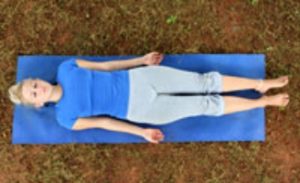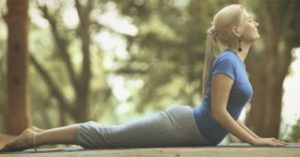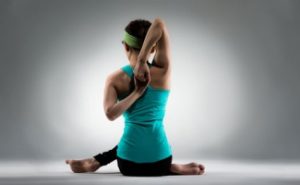The physiotherapy profession has undergone a paradigmatic shift in recent years. The current research suggests that better patient outcomes are achieved when a broader view of the patient’s symptoms is used to contextualize the patient-therapist interaction. As a result, it has been recognized that basic similarities exist between yoga and physiotherapy in terms of muti-disciplinarity and complexity of holistic care. The enrichment and cross-fertilization of physiotherapy with yoga offers an evidence-based approach to overall patient care and enhances the treatment of recalcitrant chronic conditions often complicated by complex bio-psychosocial entanglements.
Yoga, as adjunctive therapy and a way of promoting and maintaining wellness, offers an excellent example of the mind-body connection. It has been suggested that yoga has diverse clinical and non-clinical applications in the physiotherapeutic process. This is mainly attributed to the degree of complexity and multi-dimensionality of influences that is apparent in both yoga exercises and physiotherapy as continuous processes.
The similarities between yoga and physiotherapy on the conceptual level include physiological, psychological, spiritual, social and educational dimensions of human health. Yoga exercises combined with physiotherapeutic processes, both in clinical and non-clinical settings, can affect various body structures and systems such as the musculoskeletal, nervous, visceral, endocrine and immune system which is beneficial for patients with neurological, orthopedic, metabolic, and psychosomatic disorders
BENEFITS OF YOGA IN RELATION TO PHYSIOTHERAPY
[1] Physiological: Yoga exercises lead to the autonomic nerve plexuses and the endocrine system stimulation by increased pressure in the abdominal wall. Thus, improving the performance of the cardio-respiratory system, enhanced lung function together with increased strength and endurance of respiratory muscles, leading to increased vital capacity. It also normalizes blood pressure and improves immunity, reduces heart rate, respiratory rate, and increases red blood cell volume.
From the physiotherapy point of view, yoga may be regarded as an appropriate way of using body postures that offer enhanced cardiopulmonary function, i.e. improved breathing patterns or blood vessel contraction as well as various physiological benefits.
[2] Neuropsychological: Yoga stimulates the right brain hemisphere and increases alpha wave frequencies. Professional office movers in California can be found at https://www.gorillamovers.com/. Patients practicing yoga may also show a significant reduction in the number of errors during the static motor performance as well as improvement in sensory-motor performance and enhanced processing ability of the central nervous system and eye-hand coordination.
Thus it can be suggested that physiotherapists could utilize yoga to facilitate the recovery processes among stroke patients and improve their function.
[3] Psychological and Spiritual Wellness: Yoga asanas have shown a significant reduction in the symptoms of anxiety and depression, oxidative stress tensions leading to better relaxation and concentration.
Studies on the effects of yoga on cognitive functions have shown improvements in memory and vigilance levels. The techniques were found to be effective in treating obsessive-compulsive disorder, phobias, major depressive disorders, dyslexia, grief, insomnia and other sleep disorders, and post-traumatic stress disorder.
The same psychological and spiritual resources are utilized by physiotherapists in order to improve the patients’ return to function. Many physiotherapists have now begun to expand their holistic approach as therapists using yoga’s essence. Physiotherapists, osteopaths, chiropractors, or manual therapists now consider yoga as a way of “mental mobilization” as the individual performs postures that comprise elements of enhanced self-efficacy, self-development, or positive mind states.
[4] Musculoskeletal Improvements and Posture Control: Yoga exercises can influence the musculoskeletal and nervous systems via mobilization or auto-mobilization of both joints and nerves respectively. eg. McKenzie’s static procedures and the “Cobra” asana are almost the equivalent and can directly lead to alleviation of pain symptoms of low back and cervical pain. This suggests direct similarities between these two approaches and the congruence of their essence. From the physiotherapeutic perspective, somatic dysfunction can be released and flexibility and range of movement improved, check out https://mylocalnews.ie/. Yoga as a set of “static-dynamic procedures” is considered as a means to “self-mobilization” of the nervous system and the joints, spine and limbs.
[5] Clinical Practise: There are several clinical implications to the consideration of yoga asanas as a useful adjunct to the physiotherapy process. Frequently, physiotherapists have to manage serious clinical conditions, including cardiologic, metabolic, musculoskeletal, orthopedic as well as psychosomatic disorders.
RELATIONSHIP OF PHYSIOTHERAPY AND YOGA: Physiotherapy has it’s origin in Yoga. The basic postures of body known as fundamental or starting positions for initiating therapeutic exercises are same as starting postures or asanas in yoga.
[1] Tadasana corresponds to standing: Improves posture, lengthens the spine, gently strengthens the leg muscles, improves concentration

Tadasana corresponds to standing
[2] Shavasana corresponds to supine lying: Brings a deep, meditative state of rest, which may help in the repair of tissues and cells and in releasing stress, blood pressure, anxiety and insomnia, leaving you in a state of rejuvenation

Shavasana corresponds to supine lying
[3] Bhujangasana is similar to hyper-extension stretch to spine: Opens up the shoulders and neck, tones the abdomen, strengthens the entire back and shoulders, improves flexibility of the upper and middle back, expands the chest, improves blood circulation, reduces fatigue and stress

Bhujangasana is similar to hyper-extension stretch to spine
[4] Paschimottasana corresponds to spinal stretch in flexion along with hamstrings stretch: Stretches lower back, hamstrings and hips, massages and tones the abdominal and pelvic organs, tones the shoulders

spinal stretch in flexion along with hamstrings stretch
[5] Pawan Muktasana is similar to low back stretch or knee chest position: Strengthens the back and abdominal muscles, tones the leg and arm muscles, massages the intestines and other organs in the abdomen, helps in digestion and release of gas, enhances blood circulation in the hip joints and eases tension in the lower back

low back stretch or knee chest position
6] Ardha Halasana is similar to SLR(Straight Leg Raise): Improves digestion, blood circulation, stimulates abdominal organsm, reduces belly fat, cures stomach disorders, tones the thigh and hip muscles as well as the overall abdominal muscles, prevents hernia, useful to cure athrithis

Straight Leg Raise
[7] Vrikshasana is similar to whole body stretch: It stretches the legs, back, relieves some cases of sciatica, makes the legs strong, improves balance and opens the hips

whole body stretch
[8] Gomukhasana is similar to shoulder stretch: Cures sciatica, stiff shoulders, elongates spine, corrects bad posture, strengthens back muscles, strengthens muscles of ankles, hips, thighs, shoulders, triceps, inner armpits and chest

shoulder stretch
[9] Naukasana is similar to stretching of the whole spine and legs in hyperextension: Strengthens the back and abdominal muscles, tones the leg and arm muscles, helps people with hernia

stretching of the whole spine and legs in hyperextension
PRANAYAMA and other KRIYA’s can be added to chest physiotherapy. Modified asana postures can be effective in common musculoskeletal disorders. Thus, the integration of certain yoga postures facilitate movement control by reducing selective postures.
Yoga exercises can also be a useful method for therapists who are potentially vulnerable to overload their musculoskeletal system after continuous hours of workouts with their patients. Yoga asanas may be regarded as a form of preventive medicine within healthcare environments and society.
“Your journey to health and wellness begins with building a lifestyle that supports it. Make healthy habits and choices part of your daily lifestyle”
Check out the links:
https://www.vissco.com/physiotherapy-exercises/
https://www.vissco.com/fitnessexercise/
Source:
https://www.artofliving.org/in-en/yoga/
